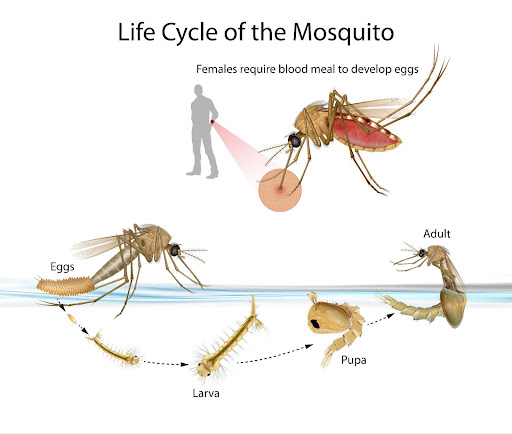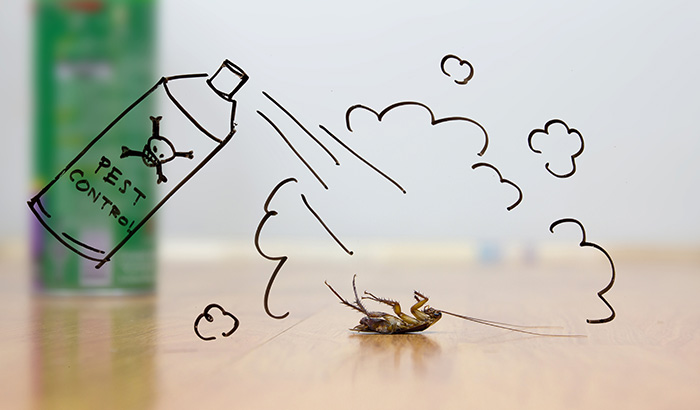The effects of climate change are being studied every day, and it’s no different when it comes to its impact on insects and pest control capabilities.
Where you live can affect the pests that gravitate to your home and your pest control options. The climate affects where they live, their life cycle, behavior, and overall number of pests that can wreak havoc on your property. Pest control companies keep climate front of mind when solving pest infestation problems.
Read on as we share everything you need to know about how climate impacts pests and what you can do to prevent them from disrupting your life.
1. Temperature
Temperature is one of the top influencers of pest populations and pest control. Warmer temperatures can accelerate the development and reproduction of many pests. Insect metabolic rates increase when temperatures rise, implying they must consume more food to survive. As a result, bugs may enter homes searching for a good snack, or you might notice increased insect damage to your garden during the warmer months.
Insects adapt to cooler temperatures by migrating to warmer weather, finding a place to hibernate, or seeking shelter. This can range from burrowing underground to invading unsuspecting houses in their quest for warmth.
Many insects become lethargic as the temperature dips. For example, grasshoppers are typically too stiff to hop after a chilly night until the light warms them up again, and some flying insects cannot move their wings quickly enough to fly. These pests will try to find warmth and temporary shelter when the temperature starts to get colder.
Your home is often the most inviting location to keep bugs warm and toasty all winter long. Spiders, ladybugs, boxelder bugs, and cockroaches are just a few of the many pests that turn indoors as the weather cools.

2. Humidity
Another aspect that influences pest activity is humidity. Insects need humidity to survive, and fluctuations in humidity levels can affect their behavior and movement. High humidity can help bugs live and reproduce, while low humidity will cause them to seek out more humid areas, such as the interior of buildings.
Dust mites flourish in high-humidity conditions, but spiders prefer lower-humidity environments. Pest control professionals can build focused methods to prevent and control infestations by monitoring humidity levels in and around your home.
3. Migration
Some pests follow the advice of snowbirds and avoid cold weather by migrating entirely away from it. These pests will migrate in one direction to warmer climates to the south, where they reproduce, die, and send a new generation north to restart the cycle.
On the other hand, some pests migrate in a more indirect manner. Their daily activities constantly transport them to warmer climates, and the insects are seldom exposed to prolonged cold weather. Instead, these insect populations migrate north and south each year.
4. Hibernation
To avoid freezing temperatures, some insects, like many other animals, will hibernate in one of two ways. These hibernation-like stages of inactivity, known as diapause, induce the insect to lie dormant. This phase of dormancy helps the insect decrease its metabolism, preserve energy, and re-emerge back into the world when temperatures rise again.
While cold temperatures are lethal to many pests, mild winters can increase their survival rate over the winter months, leading to larger populations in the following growing season. Warmer winters can also disrupt the natural balance of predator-prey relationships, favoring the pests’ survival.
5. Life Cycles

Temperature and precipitation trends can also interrupt pest life cycles and help with organic pest control. Warmer winters result in lower death rates, allowing pests to survive and reproduce all year. Changed rainfall patterns can also affect insect breeding and feeding practices, causing population fluctuations and changes in behavior.
Extreme weather events threaten most insect populations, causing them to inhabit property that they might typically avoid. To correctly manage and minimize infestations, pest management solutions must take these changes into account.
6. Increasing Numbers
You’ve probably noticed that as the temperature rises, so does the number of bugs that come out to play. In general, pest control companies find the warmer months to be busier.
Mosquitoes and ants, for example, flourish in warm, humid settings. Their breeding rate increases as the temperature rises, which can quickly lead to an infestation. Because these pests breed quickly, you might require professional assistance to control them efficiently.
As the weather warms and people long for a cool breeze, residents everywhere open windows and doors to allow in fresh air; unfortunately, this can also bring in unwanted pests. Flies, mosquitoes, and other flying creatures can quickly find their way inside, making it difficult to enjoy the warmer weather without being bothered by uninvited visitors.
Warmer weather also means more human travel, which can contribute to increased pests. Bed bugs, for example, can move fast from one location to another through baggage and clothing. If travel is on the horizon, make sure to check your luggage and clothing for symptoms of bed bugs before coming home.
When You Need to Contact a Professional?
Pests sure live up to their name; no one wants these nuisances invading their space. Sometimes, eradication can be defeating and time-consuming. If you find yourself pulling out your hair due to unwanted insects, here are some signs to let you know when it’s time to contact a pest control company:
1. Signs of Pests:
Before hiring pest control services, take a walk through your home and look for some of the more visible indicators of an infestation. Pest droppings may be small, yet they are usually obvious. Examine locations that are difficult to access or out of the way, such as cupboards, pantries, crawl spaces, attics, and basements.
Gnaw marks are another warning indicator. Because mice and rats nibble on fabrics, it’s sometimes easy to tell if you have a rodent infestation. Check your walls and floor for chew or scratch marks, as well as cardboard boxes, pantry items like flour or sugar, and electrical wires.
Insect body parts are another indicator of pests in the home. Finding abandoned parts like wings or skin near a window or on a pantry shelf suggests that something left them there. Before treating the major infestation, contact an expert to assist in identifying access locations that may require sealing.
2. Smells and Sounds:
Smells and sounds come with any home — while some are unique to your home and natural, others aren’t. If your senses pick up on something that doesn’t appear to belong, this could indicate a concealed bug problem that a pest control company can tackle.
Larger pests, particularly rats, are more likely to be heard. A scurrying sound may be heard behind walls, in attics, or in crawl spaces. You could also hear scratching or scraping sounds. Termites also produce audible noises. If you’re not sure what kind of pests are making the noise, professional pest control services can help.
3. Skin Irritation:
If you or a member of your family is suffering from inexplicable bites or skin irritations, it could be the result of a pest infestation. Bed bugs, fleas, and mites can all cause bites commonly clustered in groups and exceedingly painful and uncomfortable. Because they’re usually small and hide in crevices or within fabrics, these pests can be challenging to detect.
How to Choose the Best Pest Control Company?
There are a few crucial elements to consider while shopping for local pest control services. First, ensure the organization has access to dependable and effective pest control supplies. This will confirm they can deal with a wide range of pest infestations and provide long-term remedies.
In terms of pricing, it’s critical to achieve a balance between quality and affordability. While price should not be the only deciding factor, it’s valuable to compare quotes from several firms to get an idea of how much pest control typically costs in your area.
Reach Out to Pink Pest Control Today
If you suspect you have pests in your house, be proactive and rely on Pink Pest Control’s skill and experience. We are dedicated to restoring comfort and quiet to your home, whether you suspect bugs or have a pest control emergency.
Our skilled team is ready to deliver effective and dependable pest control services adapted to your individual requirements. Whether you have ants, rodents, termites, or any other pests, we have the experience and pest control products to get rid of them quickly and efficiently.
Contact Pink Pest Control right away to take control of your pest issues. Schedule your appointment today to take the first step toward a pest-free home!

